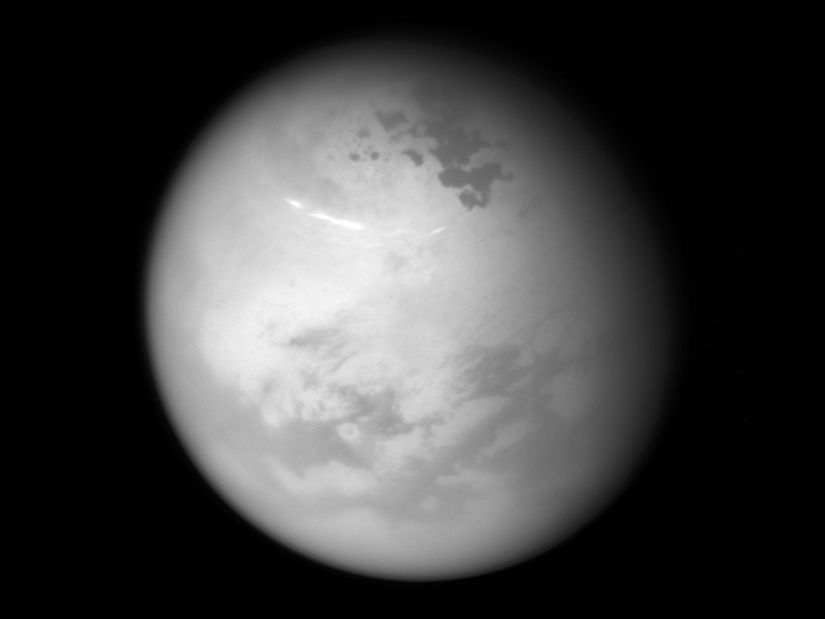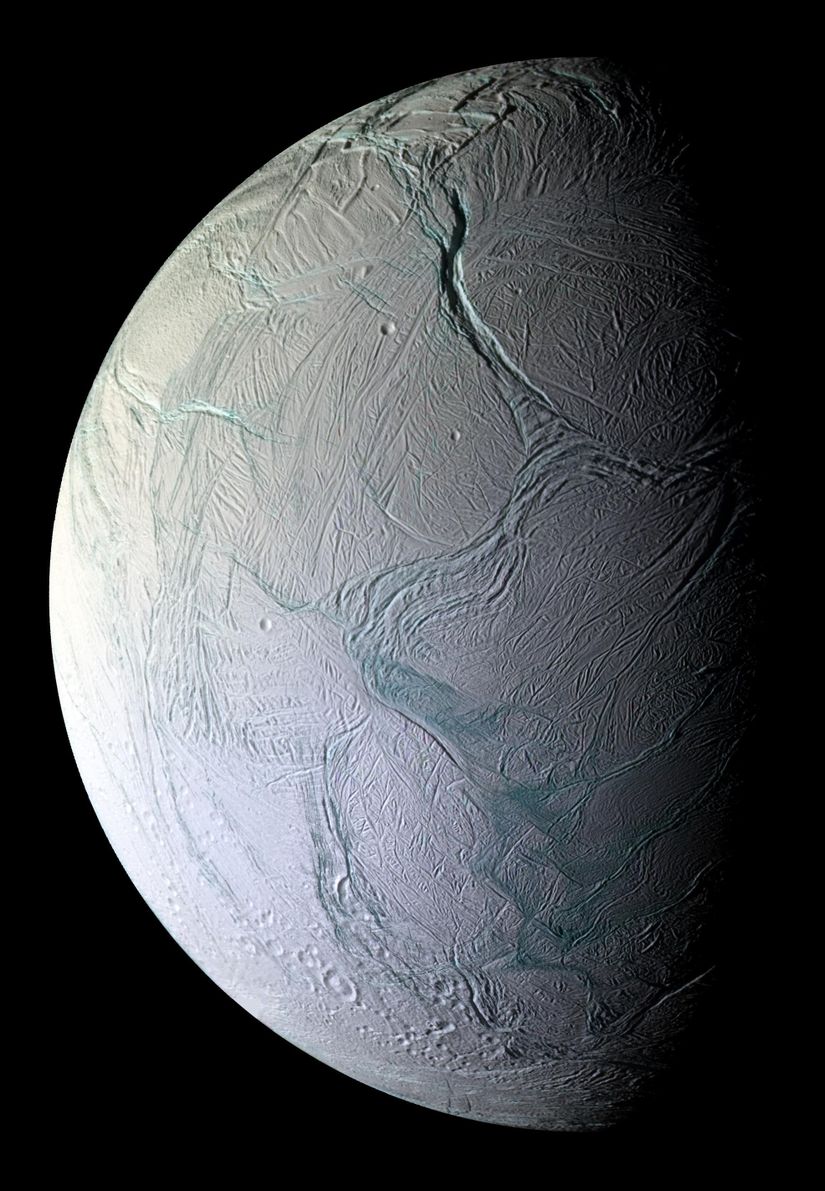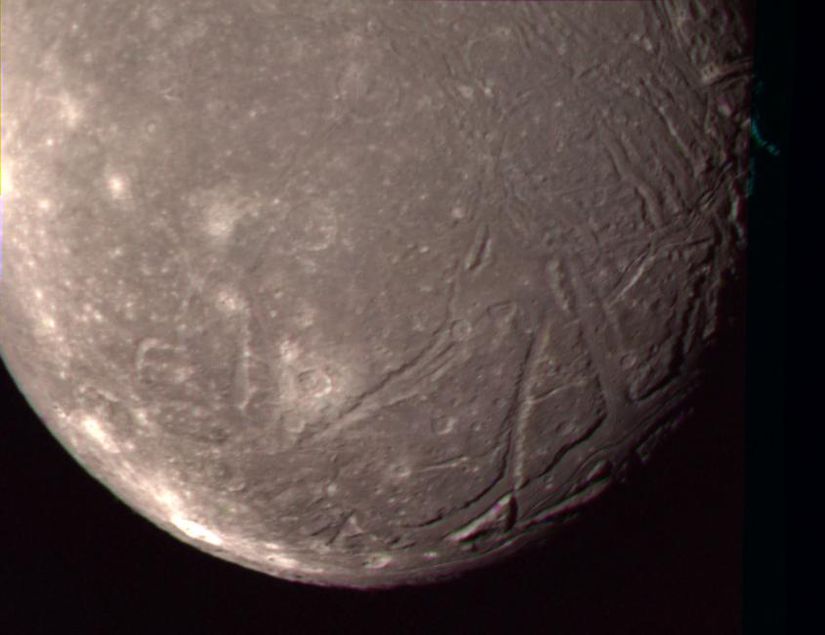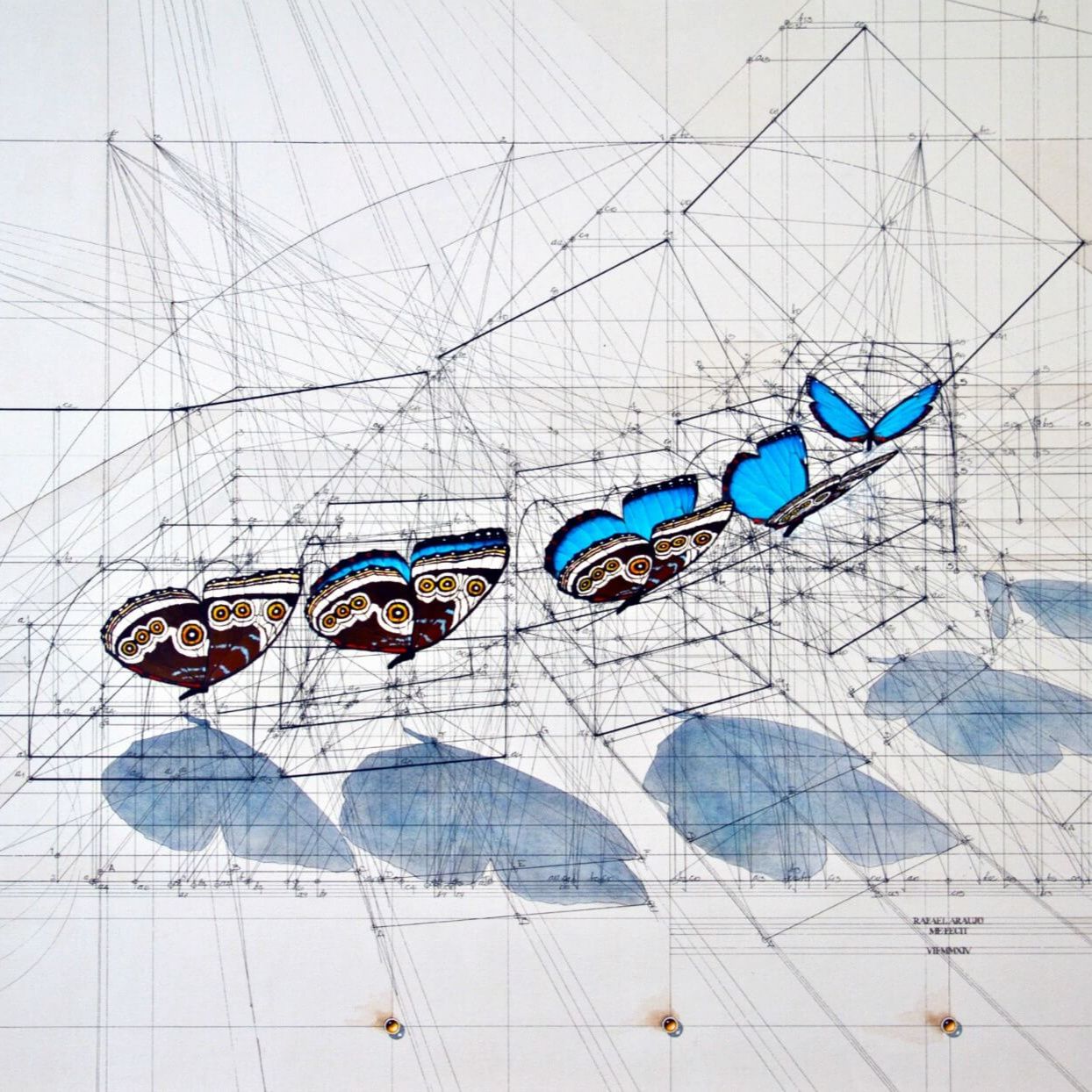Natural Moons in the Solar System: Which Planet Has How Many Moons?
Is It Possible To Have Life On The Moons Of The Planets In The Solar System?

- Blog Yazısı
There are more than 200 known moons in our Solar System. Satellites can come in many different sizes and shapes. Although most have not atmosphere, a small fraction of them has atmosphere and even oceans. Water samples found on the moons Europa, Titan and Enceladus have revived the possibility of life on these moons.[1]
Some of these moons are temporary moons. Temporary moons are celestial bodies that enter the orbit of the planet later and leave the orbit after a certain time and continue to move on their own route.[1]
Planets Without Moons
Some planets have not moons. For example, Mercury and Venus have not known moons.[2]
Earth’s Moon
It is thought that the Moon, the only satellite of the Earth, may have formed as a result of the collision of an object approximately the size of Mars with the Earth. The Moon is the 5th largest moons in the Solar System.[3]
Mars's Moons
Mars has two small moons and is among the smallest moons in the Solar System. These are Phobos and the slightly smaller Deimos. Phobos is slowly approaching Mars. In about 50 million years, it could hit the planet, or Mars' gravity could break Phobos apart and form a thin ring around Mars. Phobos has only 1/1000 of Earth's gravitational pull. In other words, a person weighing 68 kilograms on Earth would weigh 68 grams on Phobos.[4]
Jupiter’s Moons
Jupiter has 79 moons, 26 of which are temporary. The largest of these are Io, Europa, Ganymede and Callisto. Io is the moon with the most active volcanic surface in the Solar System, and its surface is covered with sulfur. Europa's surface is mostly covered with ice and is thought to have twice as much water as Earth. Therefore, it has the potential to have a habitable zone.[5]

Ganymede is the largest moon in the Solar System and is even larger than a planet, Mercury. It is also the only known moon to generate its own magnetic field. The surface of Callisto is extremely heavily cracked and old. This is a visible source of events in the early history of the Solar System.[5]
Evrim Ağacı'nın çalışmalarına Kreosus, Patreon veya YouTube üzerinden maddi destekte bulunarak hem Türkiye'de bilim anlatıcılığının gelişmesine katkı sağlayabilirsiniz, hem de site ve uygulamamızı reklamsız olarak deneyimleyebilirsiniz. Reklamsız deneyim, sitemizin/uygulamamızın çeşitli kısımlarda gösterilen Google reklamlarını ve destek çağrılarını görmediğiniz, %100 reklamsız ve çok daha temiz bir site deneyimi sunmaktadır.
KreosusKreosus'ta her 50₺'lik destek, 1 aylık reklamsız deneyime karşılık geliyor. Bu sayede, tek seferlik destekçilerimiz de, aylık destekçilerimiz de toplam destekleriyle doğru orantılı bir süre boyunca reklamsız deneyim elde edebiliyorlar.
Kreosus destekçilerimizin reklamsız deneyimi, destek olmaya başladıkları anda devreye girmektedir ve ek bir işleme gerek yoktur.
PatreonPatreon destekçilerimiz, destek miktarından bağımsız olarak, Evrim Ağacı'na destek oldukları süre boyunca reklamsız deneyime erişmeyi sürdürebiliyorlar.
Patreon destekçilerimizin Patreon ile ilişkili e-posta hesapları, Evrim Ağacı'ndaki üyelik e-postaları ile birebir aynı olmalıdır. Patreon destekçilerimizin reklamsız deneyiminin devreye girmesi 24 saat alabilmektedir.
YouTubeYouTube destekçilerimizin hepsi otomatik olarak reklamsız deneyime şimdilik erişemiyorlar ve şu anda, YouTube üzerinden her destek seviyesine reklamsız deneyim ayrıcalığını sunamamaktayız. YouTube Destek Sistemi üzerinde sunulan farklı seviyelerin açıklamalarını okuyarak, hangi ayrıcalıklara erişebileceğinizi öğrenebilirsiniz.
Eğer seçtiğiniz seviye reklamsız deneyim ayrıcalığı sunuyorsa, destek olduktan sonra YouTube tarafından gösterilecek olan bağlantıdaki formu doldurarak reklamsız deneyime erişebilirsiniz. YouTube destekçilerimizin reklamsız deneyiminin devreye girmesi, formu doldurduktan sonra 24-72 saat alabilmektedir.
Diğer PlatformlarBu 3 platform haricinde destek olan destekçilerimize ne yazık ki reklamsız deneyim ayrıcalığını sunamamaktayız. Destekleriniz sayesinde sistemlerimizi geliştirmeyi sürdürüyoruz ve umuyoruz bu ayrıcalıkları zamanla genişletebileceğiz.
Giriş yapmayı unutmayın!Reklamsız deneyim için, maddi desteğiniz ile ilişkilendirilmiş olan Evrim Ağacı hesabınıza üye girişi yapmanız gerekmektedir. Giriş yapmadığınız takdirde reklamları görmeye devam edeceksinizdir.

Saturn’s Moons
Saturn has 82 moons, 29 of which are temporary. One of the most important of these is Titan. Titan is the largest moon of Saturn and the second largest in the Solar System. Titan is the only known moon outside of Earth where all kinds of liquids collect on its surface. Titan's surface temperature is so low that its surface is covered with water ice instead of rock. However, the temperature is sufficient for the methane and ethane to remain liquid.[6]
Scientists have discovered that not only is liquid methane and ethane on Titan, it also rains from the sky, forming lakes several hundred kilometers wide and hundreds of meters deep. Also, despite Titan's distance from the Sun, there is a spherical subterranean ocean of liquid water beneath the cold surface. But Titan isn't the only satellite of Saturn with a subterranean ocean.[6]

Enceladus, another moon of Saturn, has an underground liquid water ocean in the South Pole region.[6]

Is It Possible to Have Life on Moons?
The water samples found as a result of research on Europa, Titan and Enceladus excited scientists and revived the possibility of life.[5], [6]
Jupiter and Saturn are outside the habitable zone due to their distance from the Sun, although the existence of underground water oceans has attracted more scientists to research on these moons. Even if a living species is not discovered in the researches, it is thought that it has the potential to create a habitat in that region later on.[5], [6]
Uranus’s Moons
Uranus has 27 moons. Ariel is the brightest and possibly the youngest surfaced moon of all the moons of Uranus. Miranda is the smallest moon of Uranus and its outer surface is curved like no other moon.[7]

Neptune’s Moons
Neptune has 14 moons. Triton is the largest of Neptune's moons. One surface of Triton is covered with ice, and at about -240 degrees Celsius, this satellite is one of the coldest bodies in the Solar System. Also, Triton is the only large moon in the Solar System to rotate in the opposite direction of its planet's rotation, suggesting that it may have once been a stand-alone object orbiting Neptune. Neptune's gravity is dragging Triton, causing it to move closer and closer to the planet. In millions of years, Triton will come so close to the planet that gravitational forces will tear it apart.[8]
Dwarf Planets’s Moons
Pluto, a dwarf planet, has 5 moons. The largest of these moons, Charon, is half the size of Pluto.[9]

Eris, the largest known dwarf planet in the Solar System, has a very small moon called Dysnomia.[10]
Haumea is the fastest spinning dwarf planet in our Solar System. It has two moons, Namaka and Hi'iaka.[11]
Makemake is the second brightest object in the Kuiper Belt and has a temporary moon called MK2. The dwarf planets Pluto, Eris, and Haumea are also located in the Kuiper Belt outside of Neptune's orbit.[12]
Ceres, the largest object in the asteroid belt between Mars and Jupiter and the only dwarf planet in the inner Solar System, has not known moon.[13]
- 1
- 0
- 0
- 0
- 0
- 0
- 0
- 0
- 0
- 0
- 0
- 0
- ^ a b D. Stillman. What Is A Satellite?. (8 Şubat 2017). Alındığı Tarih: 6 Şubat 2022. Alındığı Yer: NASA | Arşiv Bağlantısı
- ^ NASA Solar System Exploration. Moons. (19 Mayıs 2021). Alındığı Tarih: 6 Şubat 2022. Alındığı Yer: NASA Solar System Exploration Research | Arşiv Bağlantısı
- ^ NASA Solar System Exploration. Earth's Moon-Our Natural Satellite. (19 Aralık 2019). Alındığı Tarih: 6 Şubat 2022. Alındığı Yer: NASA Solar System Exploration Research | Arşiv Bağlantısı
- ^ NASA Solar System Exploration. Mars Moons. (19 Aralık 2019). Alındığı Tarih: 6 Şubat 2022. Alındığı Yer: NASA Solar System Exploration Research | Arşiv Bağlantısı
- ^ a b c d NASA Solar System Exploration. Jupiter Moons. (19 Aralık 2019). Alındığı Tarih: 6 Şubat 2022. Alındığı Yer: NASA Solar System Exploration Research | Arşiv Bağlantısı
- ^ a b c d e NASA Solar System Exploration. Saturn Moons. (19 Aralık 2019). Alındığı Tarih: 6 Şubat 2022. Alındığı Yer: NASA Solar System Exploration Research | Arşiv Bağlantısı
- ^ NASA Solar System Exploration. Uranus Moons. (19 Aralık 2019). Alındığı Tarih: 6 Şubat 2022. Alındığı Yer: NASA Solar System Exploration Research | Arşiv Bağlantısı
- ^ NASA Solar System Exploration. Neptune Moons. (19 Aralık 2019). Alındığı Tarih: 6 Şubat 2022. Alındığı Yer: NASA Solar System Exploration Research | Arşiv Bağlantısı
- ^ NASA Solar System Exploration. Pluto Moons. (19 Aralık 2019). Alındığı Tarih: 6 Şubat 2022. Alındığı Yer: NASA Solar System Exploration Research | Arşiv Bağlantısı
- ^ NASA Solar System Exploration. Eris. (19 Aralık 2019). Alındığı Tarih: 6 Şubat 2022. Alındığı Yer: NASA Solar System Exploration Research | Arşiv Bağlantısı
- ^ NASA Solar System Exploration. Haumea. (6 Ağustos 2021). Alındığı Tarih: 6 Şubat 2022. Alındığı Yer: NASA Solar System Exploration Research | Arşiv Bağlantısı
- ^ NASA Solar System Exploration. Makemake. (6 Ağustos 2021). Alındığı Tarih: 6 Şubat 2022. Alındığı Yer: NASA Solar System Exploration Research | Arşiv Bağlantısı
- ^ NASA Solar System Exploration. Ceres. (5 Ağustos 2021). Alındığı Tarih: 6 Şubat 2022. Alındığı Yer: NASA Solar System Exploration Research | Arşiv Bağlantısı
Evrim Ağacı'na her ay sadece 1 kahve ısmarlayarak destek olmak ister misiniz?
Şu iki siteden birini kullanarak şimdi destek olabilirsiniz:
kreosus.com/evrimagaci | patreon.com/evrimagaci
Çıktı Bilgisi: Bu sayfa, Evrim Ağacı yazdırma aracı kullanılarak 17/12/2025 18:08:14 tarihinde oluşturulmuştur. Evrim Ağacı'ndaki içeriklerin tamamı, birden fazla editör tarafından, durmaksızın elden geçirilmekte, güncellenmekte ve geliştirilmektedir. Dolayısıyla bu çıktının alındığı tarihten sonra yapılan güncellemeleri görmek ve bu içeriğin en güncel halini okumak için lütfen şu adrese gidiniz: https://evrimagaci.org/s/11452
İçerik Kullanım İzinleri: Evrim Ağacı'ndaki yazılı içerikler orijinallerine hiçbir şekilde dokunulmadığı müddetçe izin alınmaksızın paylaşılabilir, kopyalanabilir, yapıştırılabilir, çoğaltılabilir, basılabilir, dağıtılabilir, yayılabilir, alıntılanabilir. Ancak bu içeriklerin hiçbiri izin alınmaksızın değiştirilemez ve değiştirilmiş halleri Evrim Ağacı'na aitmiş gibi sunulamaz. Benzer şekilde, içeriklerin hiçbiri, söz konusu içeriğin açıkça belirtilmiş yazarlarından ve Evrim Ağacı'ndan başkasına aitmiş gibi sunulamaz. Bu sayfa izin alınmaksızın düzenlenemez, Evrim Ağacı logosu, yazar/editör bilgileri ve içeriğin diğer kısımları izin alınmaksızın değiştirilemez veya kaldırılamaz.









